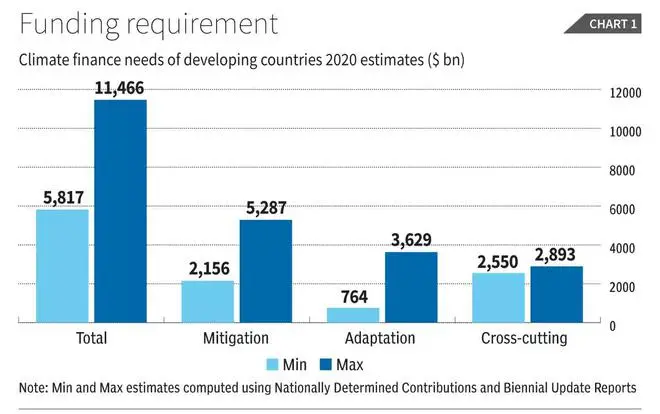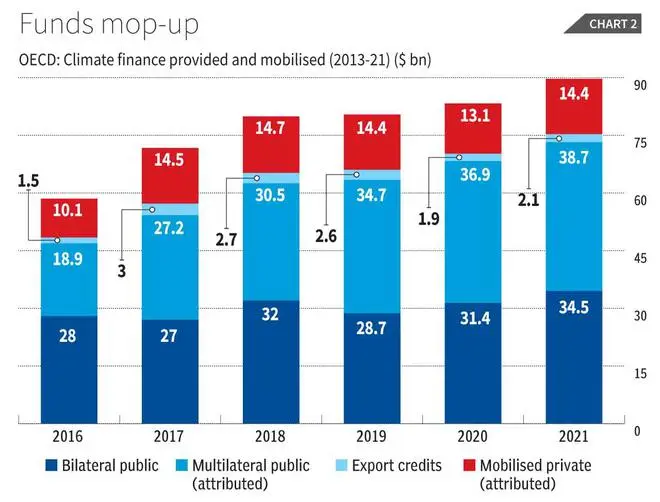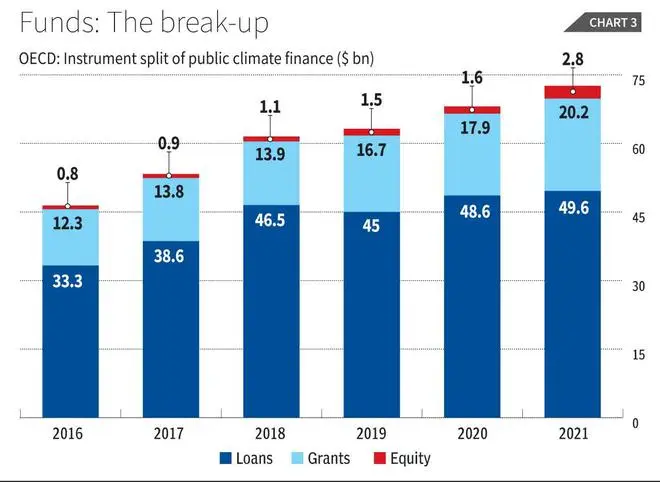The world’s leaders and their representatives meet in Dubai in December to revisit the climate challenge. Information to facilitate those discussions is not wanting. A plethora of reports, from official and private sources, covering diverse issues have been released in the run up to the summit, which lay out the policies that must be implemented to stay within the acceptable range of global warming between 1.5 and 2°C.
Indications are that discussions at Dubai would focus largely on the how far nations can and will go to phase out fossil fuels. That issue is no doubt paramount, given the disproportionate contribution that the burning of fossil fuels makes to global carbon emissions. But sole or excess focus on that also serves to divert attention from crucial practical steps that must be taken if bearable warming outcomes are to be achieved and adapted to.
Most important among those steps is to assess, identify the source of and mobilise the resources needed to implement the needed policies and measures. Unfortunately, the discourse on this crucial issue of “climate finance” tends to avoid the needed detail and fluctuates between recognising that trillions are needed and fretting over whether or when the commitment made by the developed countries in 2009, to deliver a measly $100 billion a year by 2020 will be realised.
There is a reason why attention is paid to this outdated and inconsequential goal and the trivial sum it involves. The real significance, if any, of that $100 billion-a-year goal lies not in the sum promised, but in an implicit recognition that the world’s advanced countries have a ‘historical responsibility’ to address global warming and its effects. A responsibility that arises because in their progress to developed-country status, they disgorged large volumes of carbon into the atmosphere and appropriated much of the ‘carbon budget’ available if global warming is to remain in the range.
So, if the 1.5-2°C goal is to realised, developing countries must be persuaded to opt for a strategy where their future growth is far less carbon intensive than the growth trajectory of the developed has been. To find the ways and means to do that and to move into those pathways takes money. The sums that developing countries would have to spend consists not only of mitigation expenditures, but that required to adapt to the effects of ongoing and unavoidable future warming, as well as to address the loss and damage stemming from the climate effects of that warming.
Funding needs
The sums involved are huge. The Standing Committee on Finance estimated in 2020 that total climate finance needs of developing countries would range anywhere between $5.8 trillion a year and $11.5 trillion a year (Chart 1). Estimates of mitigation spending needs to stretch from $2.2 to $5.3 trillion, adaptation finance needs from $764 billion to $3.6 billion, and cross-cutting needs between $2.6 trillion and $2.9 trillion.

To this must be added the sums needed to address loss and damage (L&D) in these countries. One estimate places “residual damages” or those that could arise even after taking account of needed adaptation expenditures at $116–435 billion in 2020, rising to $290-580 billion in 2030. Another places L&D costs in 2030 for developing countries at between $450 and $890 billion. Compared with these figures, the $100 billion goal loses all significance.
As noted earlier, justice demands that these expenditures are met with international flows from the developed to the developing countries. Moreover, the responsibility for these flows must be that of governments in the developed countries, rather than of private investors called on to cover the large gap between needs and the current levels of flows. While private investment in some mitigation efforts, such as renewable energy projects, may be forthcoming, other areas, especially adaptation and mitigation, where profits are likely to be low or absent, must rely on public finance.
Among the most cited sources for public financial flows from developed and developing countries are those routinely put out by the OECD. They are by no means encouraging. The most recent estimates relate to 2021, for which year the OECD finds that “climate finance provided and mobilised” was just $89.7 billion or more than $10 billion short of the measly target of $100 billion that was to be realised by 2020 (Chart 2). The OECD’s report speculates that the $100 billion-a-year goal is likely to have been achieved in 2022.

But the problem with the OECD’s projection is that it relates not just to official flows for mitigation and adaptation, but includes export credits with climate change effects, and private investments the occurrence of which is attributed to facilitating public flows in the form of direct investments in companies and special purpose vehicles (41 per cent), guarantees (19 per cent), and syndicated loans (16 per cent). These types of ‘public flows’ are not the kind fit for purpose. If they are excluded, climate finance provided by the developed countries in 2021 amounts to $73 billion or close to $30 billion short of target.
In addition, not enough of the public flows are directed to adaptation, which is crucial from the point of view of developing countries and their affected populations. Though flows to finance adaptation have risen from $10 billion in 2016 to $24.6 billion in 2021, they are not on track to touch the $40 billion in 2025 as required under the pledge to double adaptation finance flows taken at COP26 in Glasgow in 2021.
Moreover, estimates from the UN in its Adaptation Gap report estimate public international flows for adaptation at a lower $21.3 billion in 2021, and the adaptation financing gap at $366 billion.
Finally, a growing share of the flows, amounting to 50 per cent in 2021 is in the form of loans, much of which are at or near market interest rates (Chart 3). That kind of flow does not amount to compensating developing countries for the damage wrought by the disproportionate share of the developed in cumulative emissions and the carbon budget.

Oxfam has made estimates of actual public finance flows to the developing from the developed which takes account of the true climate relevance of the funds transferred as well as the grant equivalent value of these transfers. It finds, that as compared with the OECD’s estimates of public flows of around $80.4 billion in 2019 and around $83.3 billion in 2020, true flows averaged $20–23.5 billion a year during 2019-20. Of that, only an average of $9–10.5 billion is for adaptation.
This failure to deliver even a respectable fraction of what is due to the developing countries from the developed is the result of treating these flows as “donor assistance” and not as compensation in the nature of reparations for the damage inflicted by historical action in the developed countries. All the catch-phrases that feature in climate summits are partly meant to divert attention from this abdication of historical responsibility.





Comments
Comments have to be in English, and in full sentences. They cannot be abusive or personal. Please abide by our community guidelines for posting your comments.
We have migrated to a new commenting platform. If you are already a registered user of TheHindu Businessline and logged in, you may continue to engage with our articles. If you do not have an account please register and login to post comments. Users can access their older comments by logging into their accounts on Vuukle.